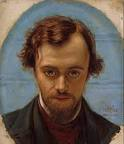The Rover
Welcome readers ! This blog is written in response to the thinking activity given by megha ma'am - Department of English, MKBU. The topic of my blog is Thinking activities in the question is 1. Angellica considers the financial negotiations that one makes before marrying a prospective bride the same as prostitution. Do you agree? Ans. I don't agree with Angellica because financial negotiations before marriage are about talking and agreeing on money and property matters legally and with both people's consent. On the other hand, prostitution is when someone gets paid money for sex, and this is against the law in many areas. So, these two things are not the same at all. 2. “ All women together ought to let flowers fall upon the tomb of Aphra Behn, for it was she who earned them the right to speak their minds.” Virginia Woolf said so in ‘A Room of One’s Own’. Do you agree with this statement? Justify your answer with reference to your reading of the play...

%20(13).jpeg)
.jpeg)

